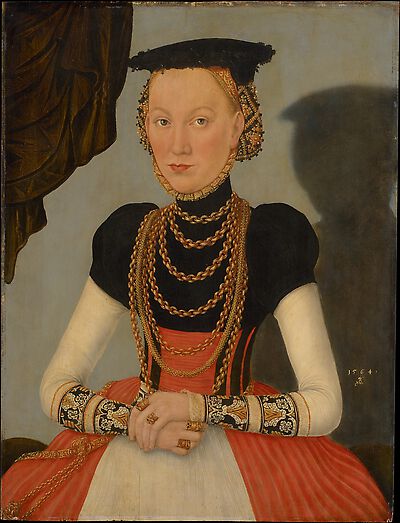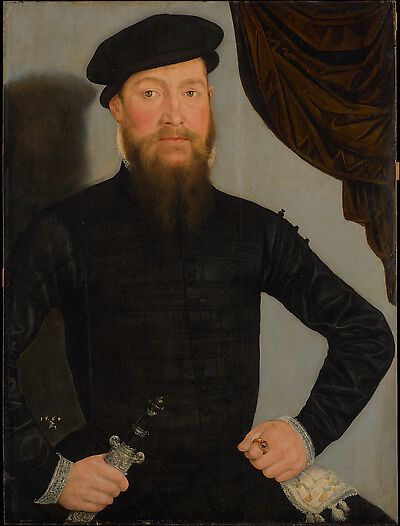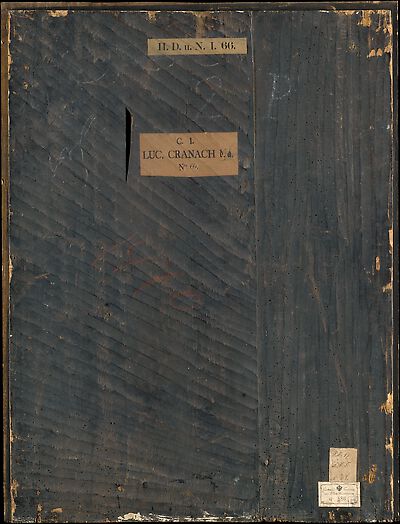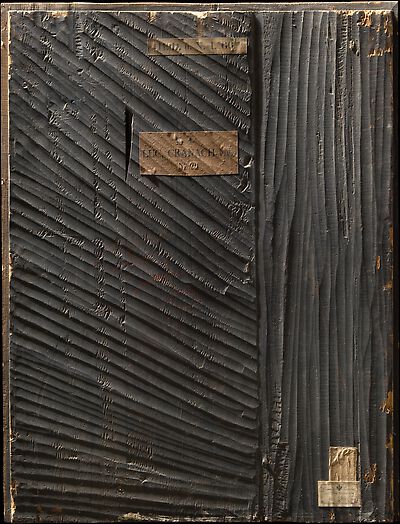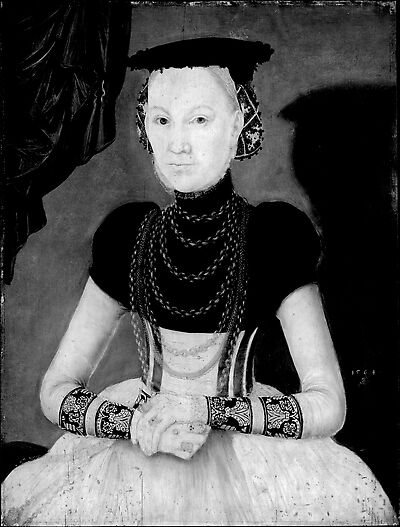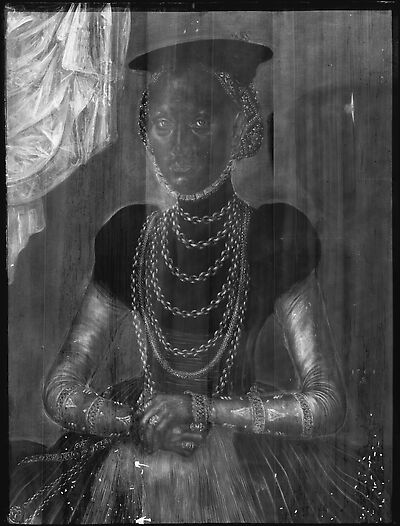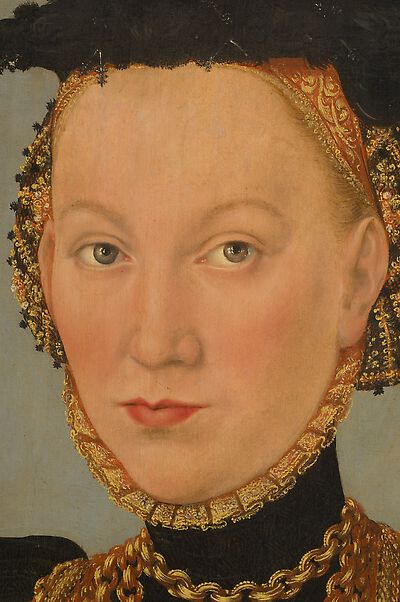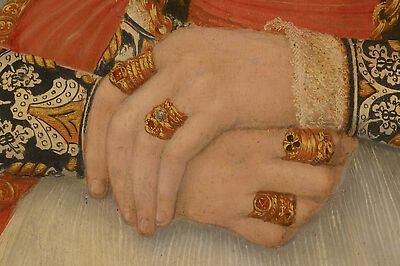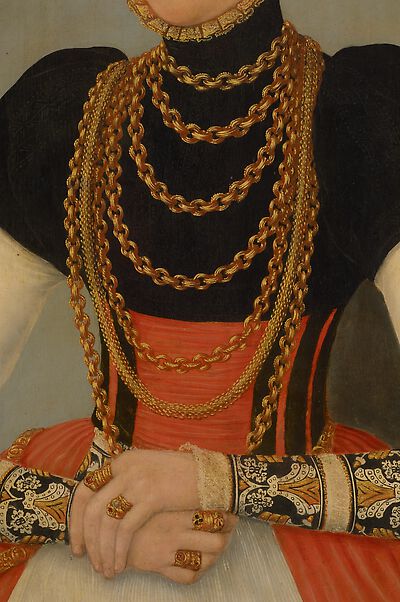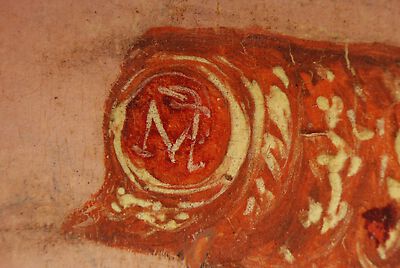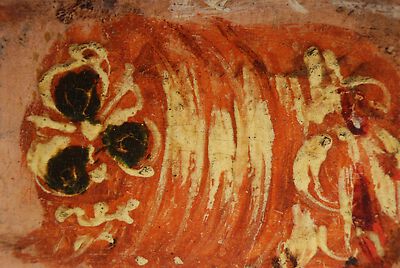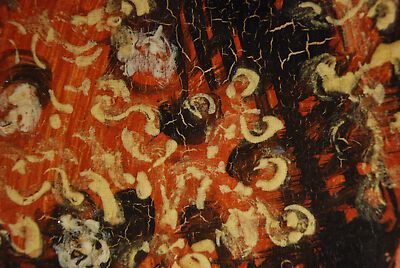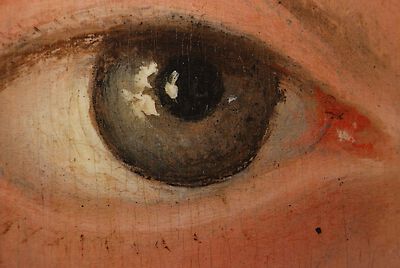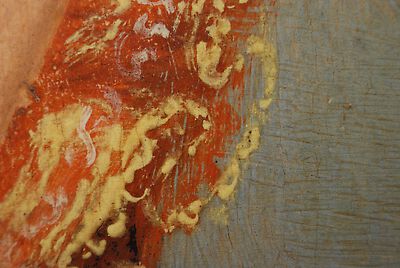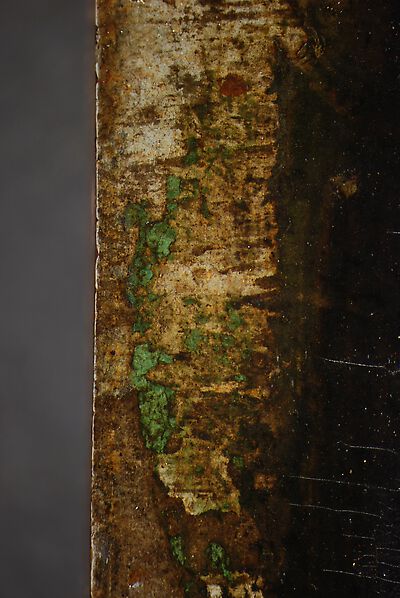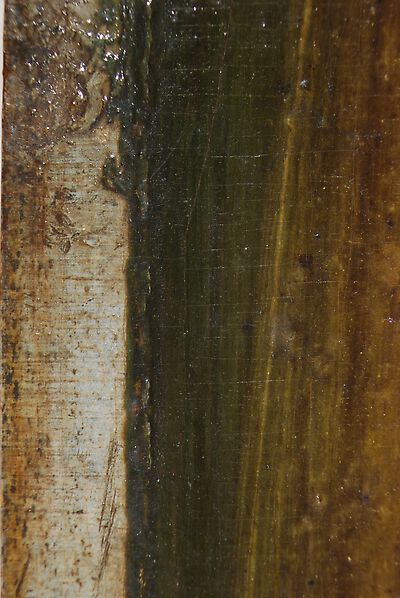| Exhib. Cat. Prague 2016 |
123 |
|
|
| Editor | Olga Kotková |
|---|
| Title | Cranach. Ze všech stran. From all sides. |
|---|
| Place of Publication | Prague |
|---|
| Year of Publication | 2016 |
|---|
| Pages | 16-180 |
|---|
|
| Hoppe-Harnoncourt 2012 |
paragraph 5 |
|
Fig. 9 |
| Author | Alice Hoppe-Harnoncourt |
|---|
| Title | The Restoration of Paintings at the Beginning of the Nineteenth Century in the Imperial Gallery |
|---|
| Journal | CeROArt, Hors series La restauration des oeuvres d'art en Europe entre 1789 et 1815. Pratiques, transferts, enjeux |
|---|
| Year of Publication | 2012 |
|---|
| Link |
http://ceroart.revues.org/2336 |
|
| Exhib. Cat. Vienna 2011 |
136 |
074 |
|
| Editor | Christof Metzger, Sabine Haag, Karl Schütz |
|---|
| Title | Dürer, Cranach, Holbein. Die Entdeckung des Menschen das deutsche Porträt um 1500 [Kunsthistorisches Museum, Vienna, 31 May 2011 - 4 Sept. 2011, Kunsthalle der Hypo-Kulturstiftung Munich, 16 Sept.-15 Jan. 2012] |
|---|
| Place of Publication | Munich |
|---|
| Year of Publication | 2011 |
|---|
|
| Exhib. Cat. Vienna 2010 |
106 |
No. 167 |
|
| Author | Gudrun Swoboda |
|---|
| Editor | Sabine Haag |
|---|
| Title | Starke Köpfe. Porträts des Kunsthistorischen Museums, [Kunsthistorisches Museum, Vienna] |
|---|
| Place of Publication | Vienna |
|---|
| Year of Publication | 2010 |
|---|
|
| Cat. Vienna 1991 |
47 |
|
Plate 599 |
| Author | Wolfgang von Prohaska, Sylvia Ferino-Pagden |
|---|
| Editor | Karl Schütz |
|---|
| Title | Die Gemäldegalerie des Kunsthistorischen Museums in Wien. Verzeichnis der Gemälde |
|---|
| Series | Führer durch das Kunsthistorische Museum |
|---|
| Volume | 40 |
|---|
| Place of Publication | Vienna |
|---|
| Year of Publication | 1991 |
|---|
|
| Exhib. Cat. Brughe 1984 |
94, 95 |
|
Fig. 42 |
| Editor | Paul Huvenne |
|---|
| Title | Pierre Pourbus, maître brugeois, 1524 - 1584, [Musée Memling, Hôpital Saint-Jean, Brughe] |
|---|
| Place of Publication | Brughe |
|---|
| Year of Publication | 1984 |
|---|
|
| Friedländer, Rosenberg 1979 |
|
430 (and under No. 427) |
|
| Author | Max J. Friedländer, Jakob Rosenberg |
|---|
| Editor | G. Schwartz |
|---|
| Title | Die Gemälde von Lucas Cranach |
|---|
| Place of Publication | Basel, Boston, Stuttgart |
|---|
| Year of Publication | 1979 |
|---|
|
| Exhib. Cat. Essen 1976 |
138 |
|
Fig. 158 |
| Editor | Heinz Althöfer |
|---|
| Title | Fälschung und Forschung, [Museum Folkwang, Essen, October 1976 - January 1977; Skulpturengalerie Staatliche Museen Preußischer Kulturbesitz, Berlin, January - March 1977] |
|---|
| Place of Publication | Essen |
|---|
| Year of Publication | 1976 |
|---|
|
| Schade 1974 |
103 |
|
Plate 239 |
|
|
| Cat. Vienna 1973 |
51 |
|
Plate 131 |
| Editor | Klaus Demus |
|---|
| Title | Verzeichnis der Gemälde |
|---|
| Series | Führer durch das Kunsthistorische Museum |
|---|
| Volume | 18 |
|---|
| Place of Publication | Vienna |
|---|
| Year of Publication | 1973 |
|---|
|
| Exhib. Cat. Vienna 1972 |
34 |
No. 29 |
Fig. 28 |
| Author | Karl Schütz |
|---|
| Editor | Kunsthistorisches Museum, Wien |
|---|
| Title | Lucas Cranach der Ältere und seine Werkstatt. Jubiläumsausstellung museumseigener Werke 1472-1972 |
|---|
| Place of Publication | Vienna |
|---|
| Year of Publication | 1972 |
|---|
|
| Osten, Vey 1969 |
309 |
|
|
| Author | Gert von der Osten, Horst Vey |
|---|
| Title | Painting and sculpture in Germany and the Netherlands 1500 to 1600 |
|---|
| Series | Pelican History of Art |
|---|
| Volume | 31 |
|---|
| Place of Publication | Harmondsworth, Middlesex |
|---|
| Year of Publication | 1969 |
|---|
|
| Hutter 1968 |
36-37 |
|
Fig. 2 |
| Author | Heribert Hutter |
|---|
| Title | Picasso und Wien |
|---|
| Journal | Alte und moderne Kunst |
|---|
| Issue | H. 97 |
|---|
| Year of Publication | 1968 |
|---|
| Pages | 36-37 |
|---|
|
| Cat. Vienna 1963 |
40 |
No. 119 |
|
| Author | n. a. |
|---|
| Title | Katalog der Gemäldegalerie. 2, Vlamen, Holländer, Deutsche, Franzosen |
|---|
| Series | Führer durch das Kunsthistorische Museum |
|---|
| Volume | 8/2 |
|---|
| Place of Publication | Vienna |
|---|
| Year of Publication | 1963 |
|---|
|
| Exhib. Cat. Graz 1953 |
28 |
No. 43 |
|
| Editor | Landesmuseum Joanneum, Graz |
|---|
| Title | Dürer und seine Zeit. Meisterwerke der deutschen Malerei des 16. Jahrhunderts. Sonderausstellung der Gemäldegalerie des Kunsthistorischen Museums, Wien im Steiermärkischen Landesmuseum Joanneum, Graz [Steiermärkischen Landesmuseum Joanneum, Graz] |
|---|
| Place of Publication | Graz |
|---|
| Year of Publication | 1953 |
|---|
|
| Cat. Vienna 1938 |
44 |
No. 1470 |
|
| Author | n. a. |
|---|
| Title | Kunsthistorisches Museum: Katalog der Gemäldegalerie |
|---|
| Series | Führer durch das Kunsthistorische Museum |
|---|
| Volume | 8 |
|---|
| Place of Publication | Vienna |
|---|
| Issue | Second edition |
|---|
| Year of Publication | 1938 |
|---|
|
| Wolters 1938 |
127 |
|
Figs. 81, 82 |
| Author | Christian Wolters |
|---|
| Title | Die Bedeutung der Gemäldedurchleuchtung mit Röntgenstrahlen für die Kunstgeschichte. Dargestellt an Beispielen aus der niederländischen und deutschen Malerei des 15. und 16. Jahrhunderts |
|---|
| Series | Veröffentlichungen zur Kunstgeschichte |
|---|
| Volume | 3 |
|---|
| Place of Publication | Frankfurt am Main |
|---|
| Year of Publication | 1938 |
|---|
|
| Friedländer, Rosenberg 1932 |
93 |
348 (and under No. 345) |
|
|
|
| Cat. Vienna 1928 |
59 |
No. 1470 |
|
| Author | n. a. |
|---|
| Title | Kunsthistorisches Museum: Katalog der Gemäldegalerie |
|---|
| Series | Führer durch die Kunsthistorischen Sammlungen in Wien |
|---|
| Volume | 8 |
|---|
| Place of Publication | Vienna |
|---|
| Year of Publication | 1928 |
|---|
|
| Glaser 1923 |
Fn. p. 235 |
|
|
|
|
| Cat. Vienna 1907 |
340 |
No. 1470 |
|
| Author | n. a. |
|---|
| Title | Kunsthistorische Sammlungen des allerhöchsten Kaiserhauses: Die Gemäldegalerie. Alte Meister |
|---|
| Place of Publication | Vienna |
|---|
| Year of Publication | 1907 |
|---|
|
| Cat. Vienna 1896 B |
428 |
No. 1470 |
|
| Author | n. a. |
|---|
| Title | Kunsthistorische Sammlungen des allerhöchsten Kaiserhauses: Die Gemälde-Galerie. Alte Meister. Mit 120 Illustrationen |
|---|
| Place of Publication | Vienna |
|---|
| Year of Publication | 1896 |
|---|
|
| Cat. Vienna 1892 |
364 |
No. 1466 |
|
| Author | n. a. |
|---|
| Title | Kunsthistorische Sammlungen des allerhöchsten Kaiserhauses: Führer durch die Gemäldegalerie. I. Theil. Gemälde alter Meister |
|---|
| Volume | 1 |
|---|
| Place of Publication | Vienna |
|---|
| Year of Publication | 1892 |
|---|
|
| Scheibler 1887 |
297 |
|
|
|
|
| Cat. Vienna 1886 |
61 (Bd. 3) |
No. 1493 |
|
| Author | Eduard von Engerth |
|---|
| Title | Gemälde. Beschreibendes Verzeichnis. Kunsthistorische Sammlungen des Allerhöchsten Kaiserhauses |
|---|
| Volume | 1 - 3 |
|---|
| Place of Publication | Vienna |
|---|
| Year of Publication | 1886 |
|---|
|
| Waagen 1866 |
171 (Bd. 1) |
Nos. 65, 66 |
|
| Author | Gustav Friedrich Waagen |
|---|
| Title | Die vornehmsten Kunstdenkmäler in Wien. Erster Theil: Die k.k. Gemälde-Sammlungen im Schloss Belvedere und in der k.k. Kunst-Akademie, Die Privatsammlungen |
|---|
| Volume | 1 |
|---|
| Place of Publication | Vienna |
|---|
| Year of Publication | 1866 |
|---|
| Link |
https://mdz-nbn-resolving.de/details:bsb10800311 |
|
| Cat. Vienna 1858 |
121 |
No. 66 |
|
| Author | Erasmus Engert |
|---|
| Title | Catalog der k.k. Gemäldegallerie im Belvedere zu Wien |
|---|
| Place of Publication | Vienna |
|---|
| Year of Publication | 1858 |
|---|
|
| Cat. Vienna 1837 |
209 |
No. 66 |
|
| Author | Albrecht Krafft |
|---|
| Editor | Kunsthistorisches Museum, Wien |
|---|
| Title | Verzeichniss der kais. kön. Gemälde-Gallerie im Belvedere zu Wien |
|---|
| Place of Publication | Vienna |
|---|
| Year of Publication | 1837 |
|---|
|
